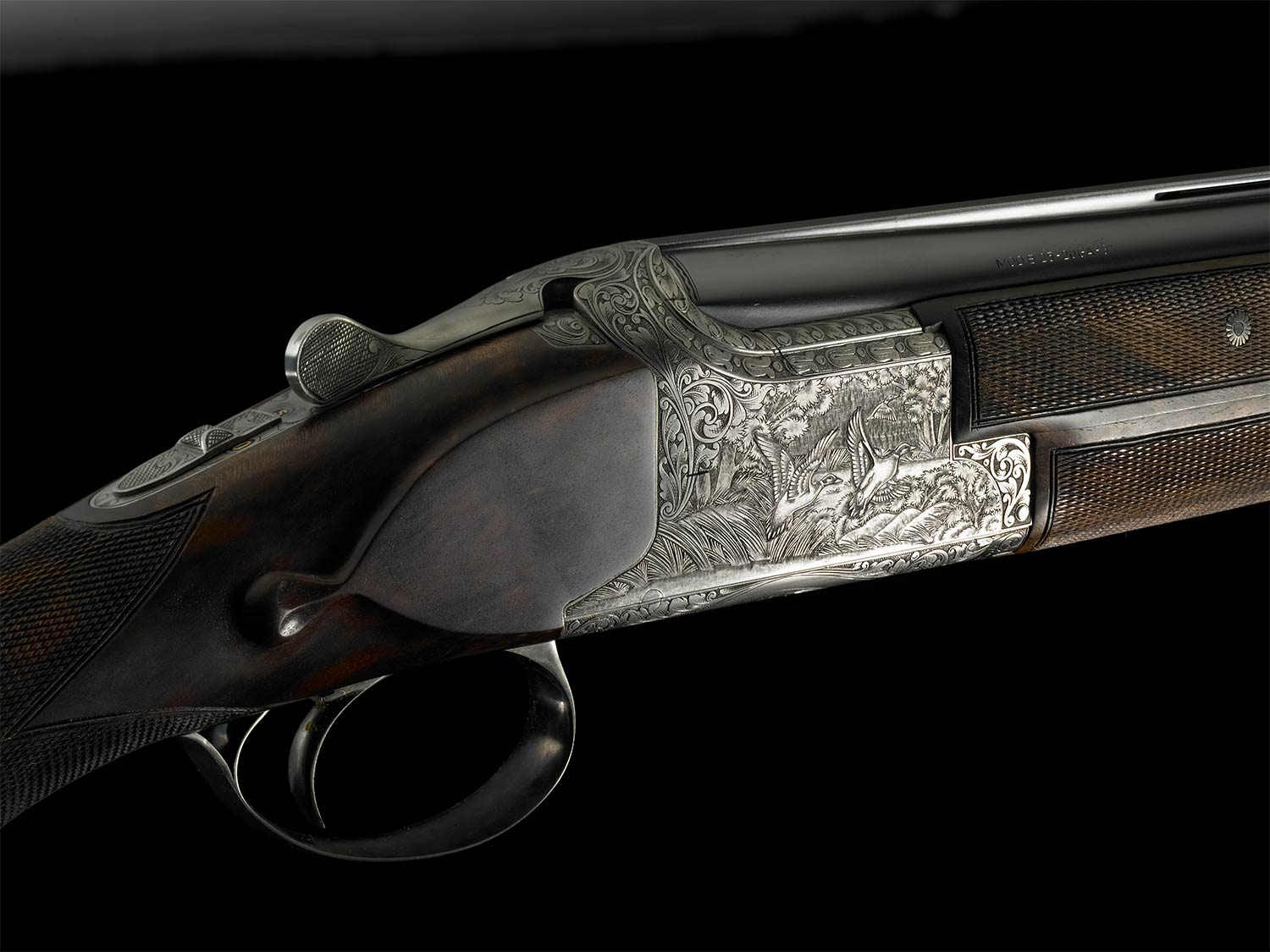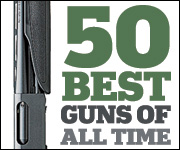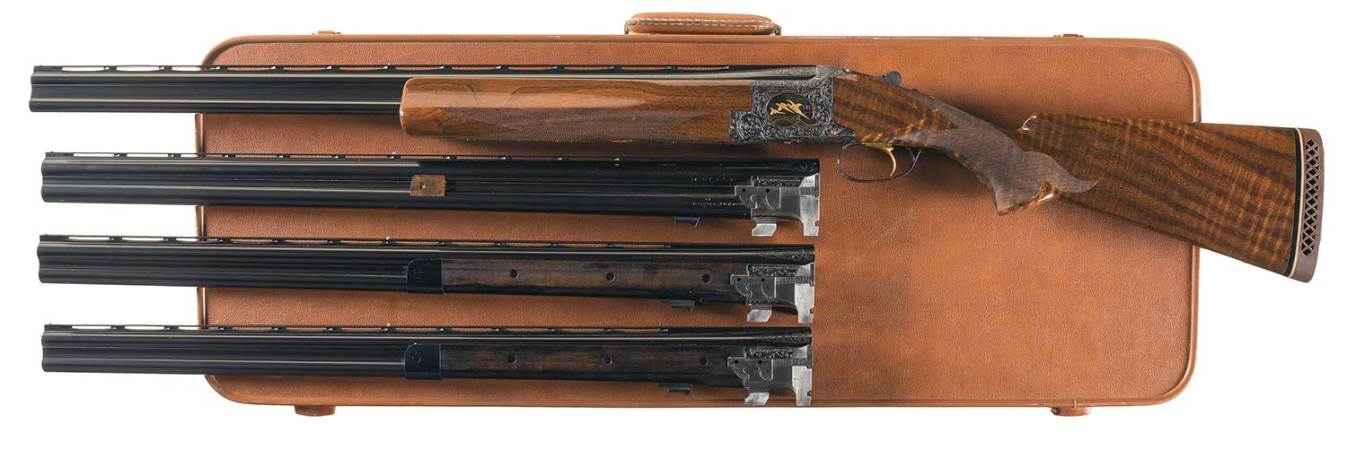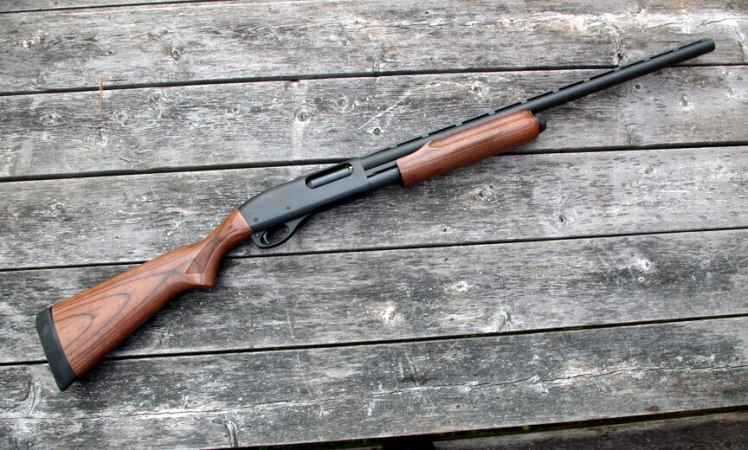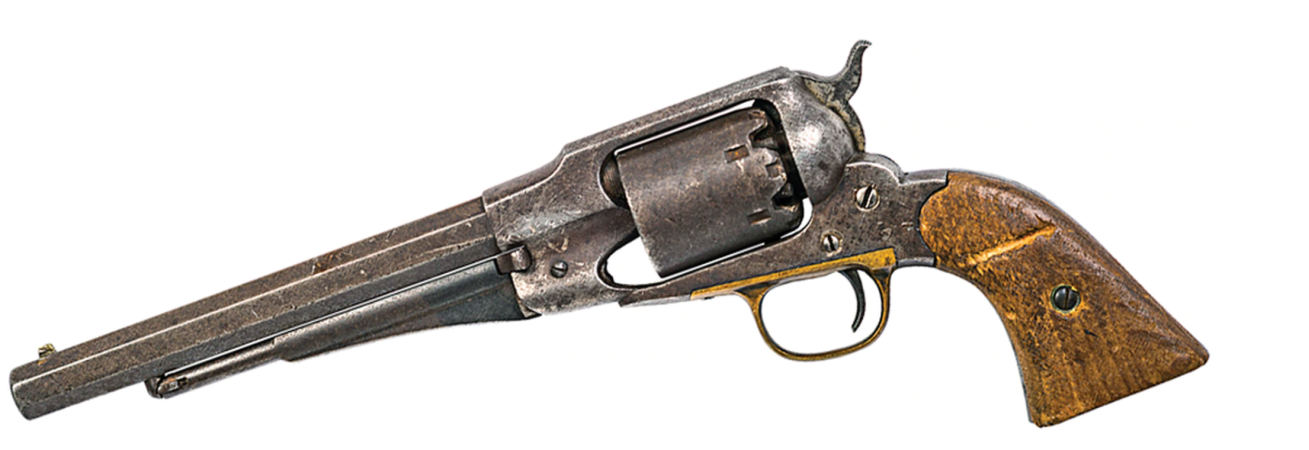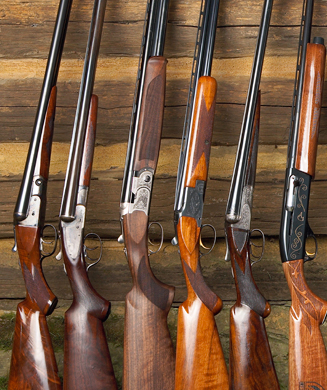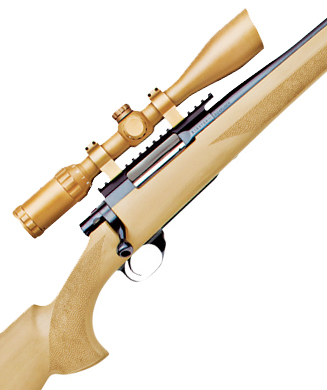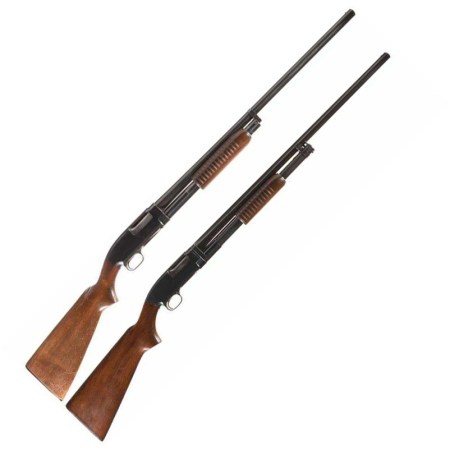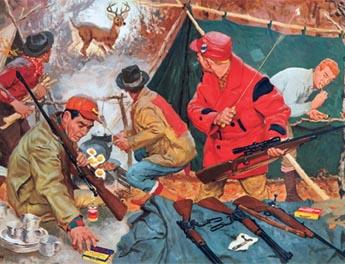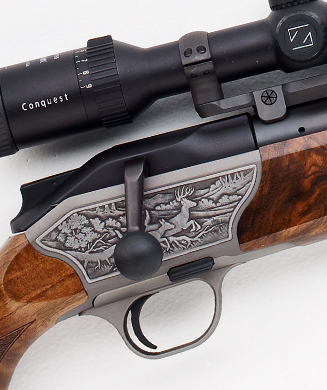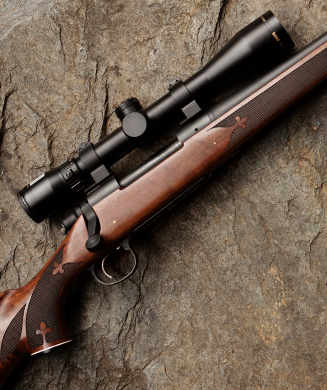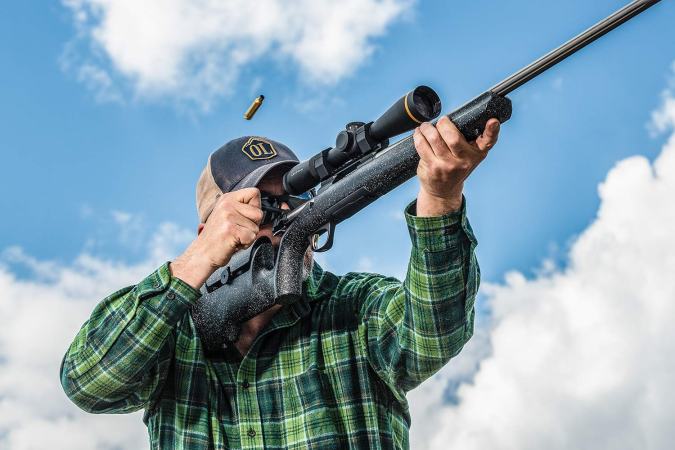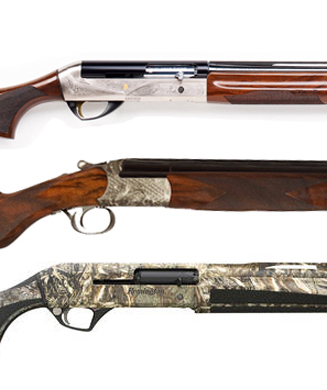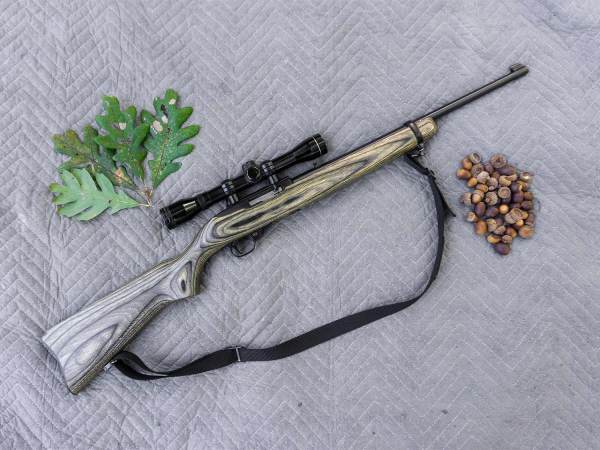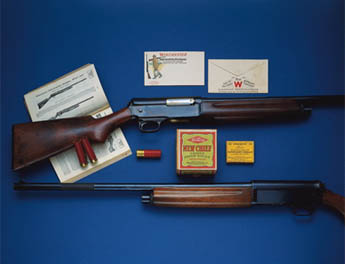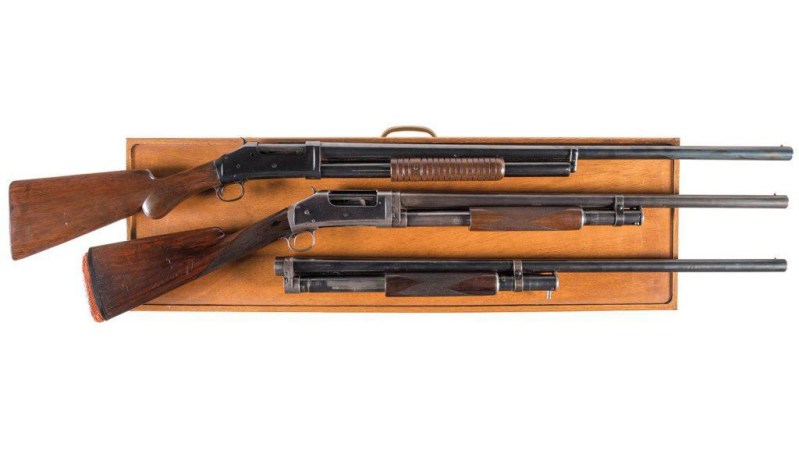We may earn revenue from the products available on this page and participate in affiliate programs. Learn More ›
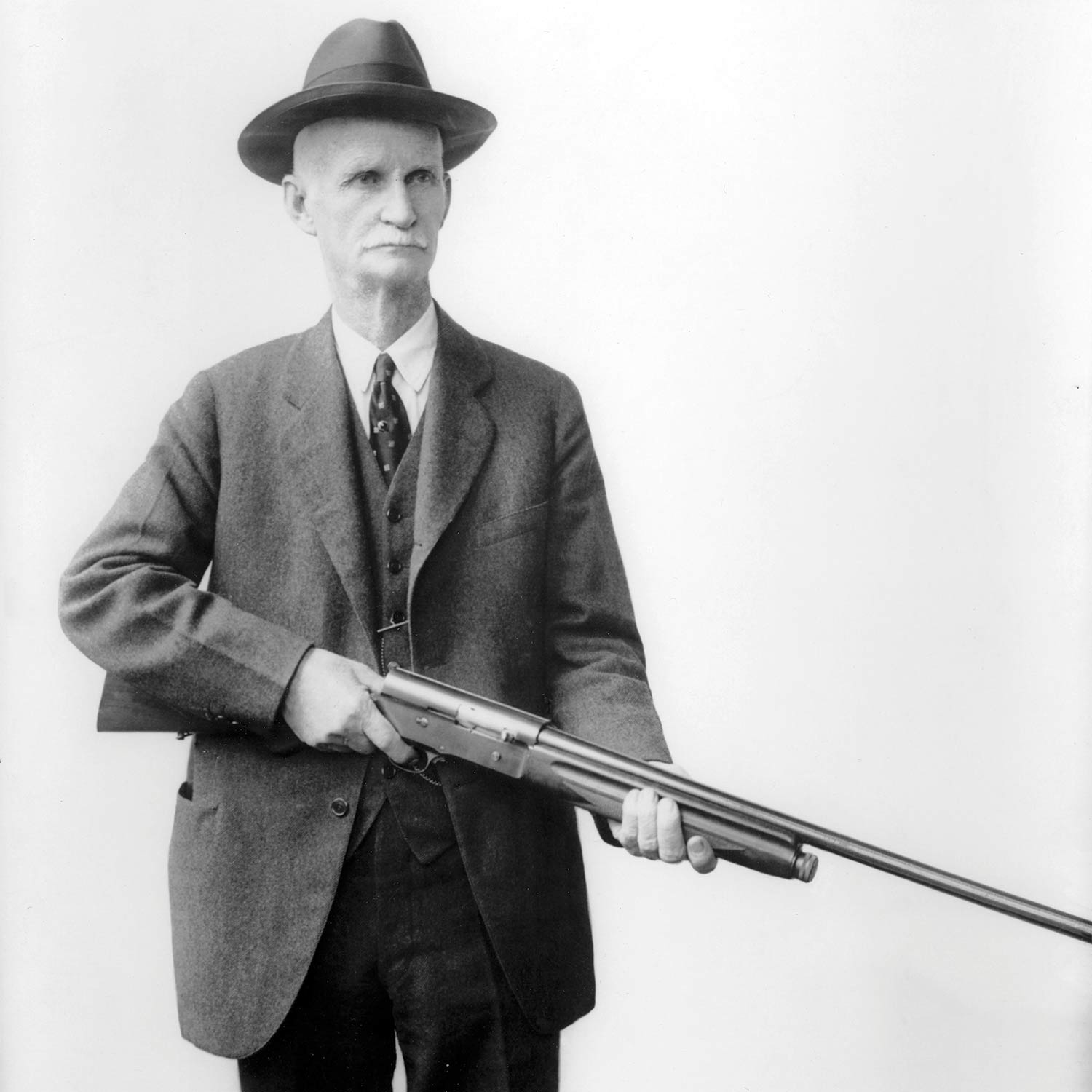
In the annals of American firearms design, one name looms through the mists of time like the gunmetal-gray bow of an oncoming battleship. John Moses Browning, who was awarded more than 120 firearms patents, spent his entire life immersed in firearms and their design. From the time he began working in his father’s gunsmith shop, reportedly at the age of seven, until the day he died—while still working on a gun design 64 years later—he was one of the most inventive and prolific gun designers of all time.
Browning is justly revered for his military designs, including the M1911 .45 ACP pistol, the M2 .50-caliber heavy machine gun, and the Browning Automatic Rifle (BAR), but his fertile mind also produced truckloads of designs for what we would today consider to be sporting arms, although many of these were also used by the military and law enforcement.
According to the National Inventors Hall of Fame, more than 30 million modern weapons are based on Browning’s designs. Choosing the best of his sporting guns was a daunting task, considering such factors as how innovative, influential and popular a particular design proved to be. Your favorite may not be on our list, and that’s okay. There’s always been debate over Browning’s greatest designs, and there likely always will be, but the man’s brilliance is evidenced by the fact that many of his guns—or their direct descendants—are still in production today, well over a century after their inception.
Here are our choices for 10 of John Browning’s best sporting designs.
Winchester 1885 Rifle

The Model 1885 single-shot, falling-block action rifle was the first long gun designed by John Browning and the one that began his long relationship with Winchester. The gun hit the scene at a time when Creedmoor-style shooting matches were all the rage, with top shooters enjoying fame rivaling that of today’s top professional athletes. One of those competitive shooters was Major Ned Roberts, the father of the 257 Roberts cartridge and a contributor to Outdoor Life. He deemed the 1885 to be the best single-shot rifle ever produced.
The gun was initially offered in two versions. The Low Wall gun was chambered for less-powerful cartridges of the time, while the High Wall rifle, with its massive steel frame, was chambered for more potent blackpowder cartridges such as the .45-70 Gov’t and others.
Winchester produced some 140,000 1885 rifles, in a host of variations and custom configurations, but production came to an end in the 1920s. Happily, the rifle was reintroduced in 2005, and is today available in several models. These include a rimfire version, the High Wall Hunter in chamberings ranging from .22-250 Rem. to .300 Win. Mag., and the Traditional Hunter High Grade chambered in .45-70 Gov’t and .38-55 Win.
Browning Automatic-5 Shotgun
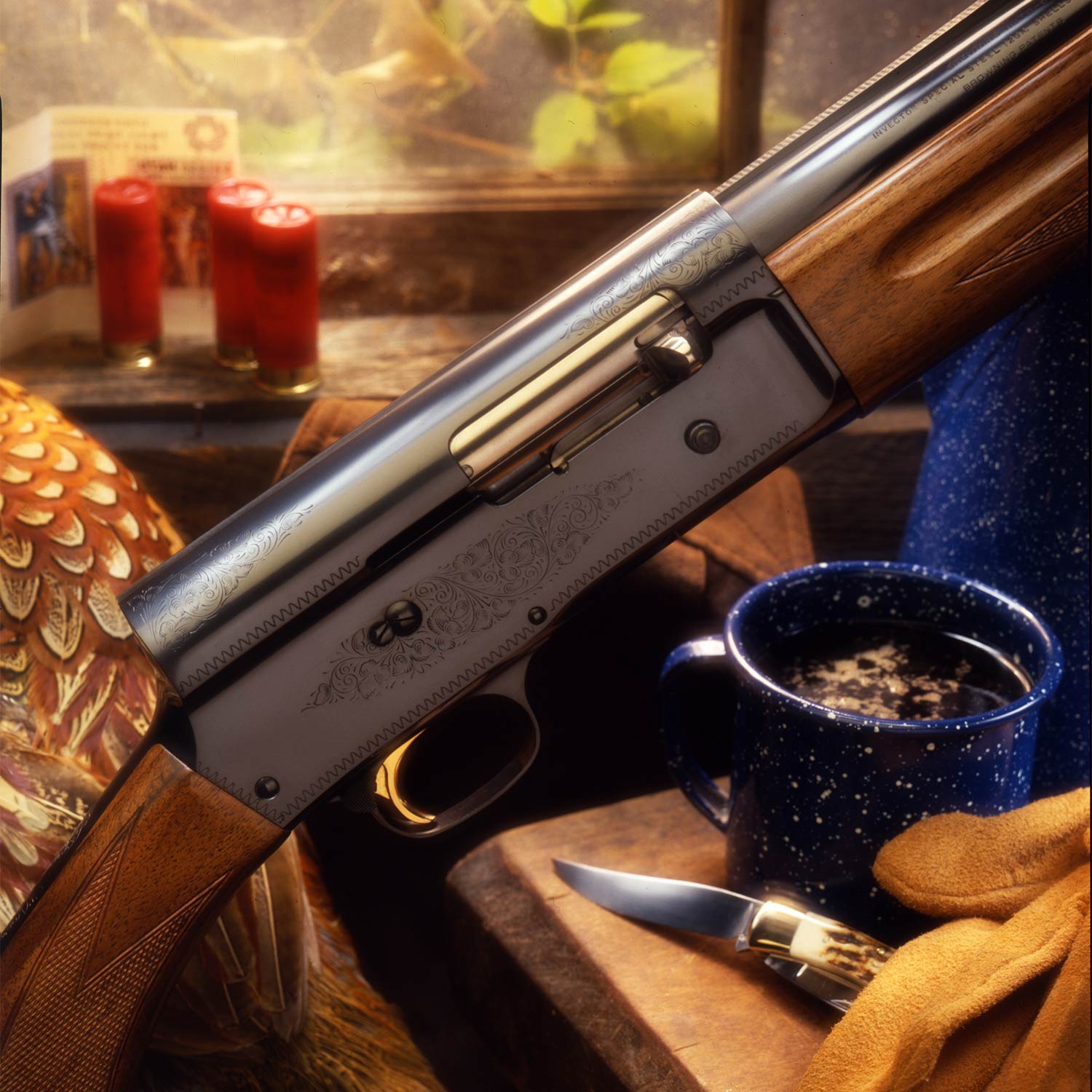
The iconic “humpback” profile of the Browning Automatic-5 (or Auto-5 or A5) is instantly recognizable to shotgun enthusiasts everywhere, and, well, it should be. The gun was the first successful semiautomatic shotgun and was produced for nearly 100 years. It got off to a bit of a rocky start however, as John Browning could not come to terms with Winchester or Remington, and turned to FN in Belgium to produce the guns starting in 1902.
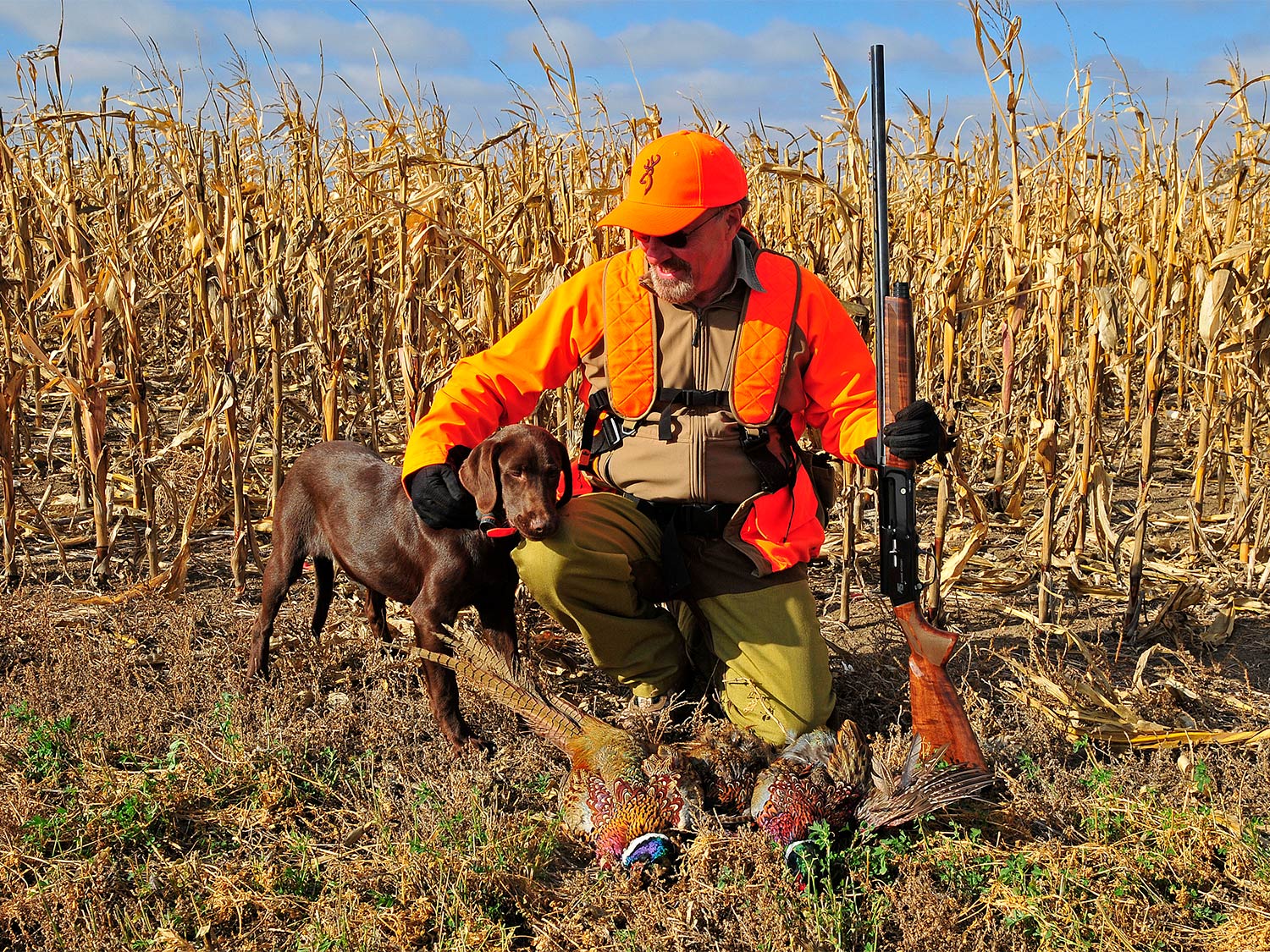
The revolutionary design used a long-recoil system, with both the barrel and bolt recoiling to the rear when the gun is fired, cocking the hammer, and then chambering a shell on the return cycle as the bolt and barrel move forward. Although production in Belgium was interrupted by World War II, Remington made the A5 alongside its own Model 11, a licensed version of the A5, during the war years. Production resumed in Belgium after the war and subsequently shifted to Miroku, Japan, in 1975.
Production ceased in 1998, but Browning brought the A5 back in 2014. Offered in eight models, today’s A5 retains the classic humpback appearance, but the guts of the gun are entirely different. The long-recoil system has been replaced with a short recoil-operated kinematic drive system that does away with the need to adjust the friction-ring system of the original to match recoil to the shotshell used. Newer models include the resurrected “Sweet Sixteen,” an instant-hit which some say may singlehandedly save the 16-gauge shotshell from virtual commercial extinction.
Read Next: 5 Iconic Lever-Action Rifles
Winchester 1886 Rifle

The Model 1886 was the second firearm John Browning created for Winchester, and it was a game-changer. Until the ’86 was born, many lever-action rifles of the time were limited in cartridge choices and real stopping power for big animals like bison, elk, and grizzlies. With its new and stronger locking-block action, the 1886 was initially chambered for the then-new .45-70 Gov’t, the .45-90 Win. and the .40-82 Win. Other blackpowder cartridges were added to the lineup, including the potent 50-110 Win., and the gun proved strong enough, with a change of barrel steel, to move into the smokeless powder age with the .33 WCF cartridge in 1903.
The rifle became a favorite of big-game hunters and was used by Theodore Roosevelt in his pre-presidency days as a Western cattleman. But, not even Teddy could have topped Britain’s use of the 1886 to pursue “big game.” The Royal Flying Corps purchased the guns with the intention of using incendiary bullets to take down German airships filled with hydrogen gas during World War I.
The 1886 ceased full production in 1935 but refused to go away. As with many lever-action rifles, there have been limited production runs and replicas from foreign manufacturers ever since. Current offerings from Winchester include the 1886 Short Rifle, chambered in .45-70 Gov’t and .45-90 Win., and an Extra Light rifle in .45-70 Gov’t. The cream of the current crop is the 1886 Deluxe Case Hardened rifle, chambered in .45-70 Gov’t, with a high-grade walnut stock, case-colored receiver and octagon barrel.
Winchester 1892 Rifle

While other guns may have actually won the West, Hollywood created the impression that the Winchester 1892 played a starring role, and in a sense, it did. It was the rifle used by John Wayne and other big-screen idols in many movies, and it was a modified, large-loop 1892 used in The Rifleman TV show. The guns were popular with the studios because they were inexpensive at the time, and there were a lot of 1892 rifles floating around—with more than one million made.
The real story of the 1892 is a bit less colorful but no less interesting. At a time when shooters were transitioning from black powder to smokeless powder, John Browning was tasked by Winchester to create a gun to compete with a Marlin model. Browning responded with a prototype 1892 rifle within two weeks that was basically a lighter, scaled-down version of the 1886. It was cheaper to produce, would be chambered for popular smaller blackpowder cartridges, and strong enough to handle the higher pressures generated by smokeless cartridges.
The rifle was originally chambered in .32-20 Win., .38-40 Win., and .44-40 Win., but the most popular chambering historically was the .44-40. Winchester today offers a variety of models chambered in popular pistol cartridges including .357 Mag., .44 Rem. Mag., .44-40 Win. and .45 Colt. Options include an octagon-barreled rifle as well as a carbine, large-loop carbine, short rifle, and takedown version.
Winchester 1894 Rifle

It’s hard to argue with a gun that’s been around for 125 years and is still going strong as the most popular and successful American lever-action rifle of all time. We’re talking, of course, about the Winchester 1894 rifle. Fans claim the rifle has accounted for more whitetail deer and black bears taken by hunters than any other rifle, and that may well be true as it was the first commercial sporting rifle to rack up more than 7 million units sold.
Initially chambered in the .32-40 Win. and .38-55 Win. blackpowder cartridges, the gun was designed by Browning to handle smokeless powder cartridges, but sufficiently strong barrels weren’t yet available. As soon as Winchester could fit guns with proper barrels, the rifle was chambered in 1895 for the cartridge the gun will always be synonymous with, the .30-30 Win.
Offering an unprecedented combination of quick handling characteristics and firepower, the 94 was off and running. There were some bumps in the road many decades later due mostly to component quality changes tied to various Winchester ownership changes. That’s why 94s made before 1964 command high prices.
Like many Winchester guns, the 1894 is now made in Japan, but the quality is back. Current offerings include a couple of custom- and high-grade 125th anniversary models as well as takedown, carbine, deluxe carbine short rifle, and sporter models. In addition to .30-30 Win., some are chambered for .32 Win. Special, .25-35 Win., .38-55 Win. and .450 Marlin.
Remington Model 8 Rifle
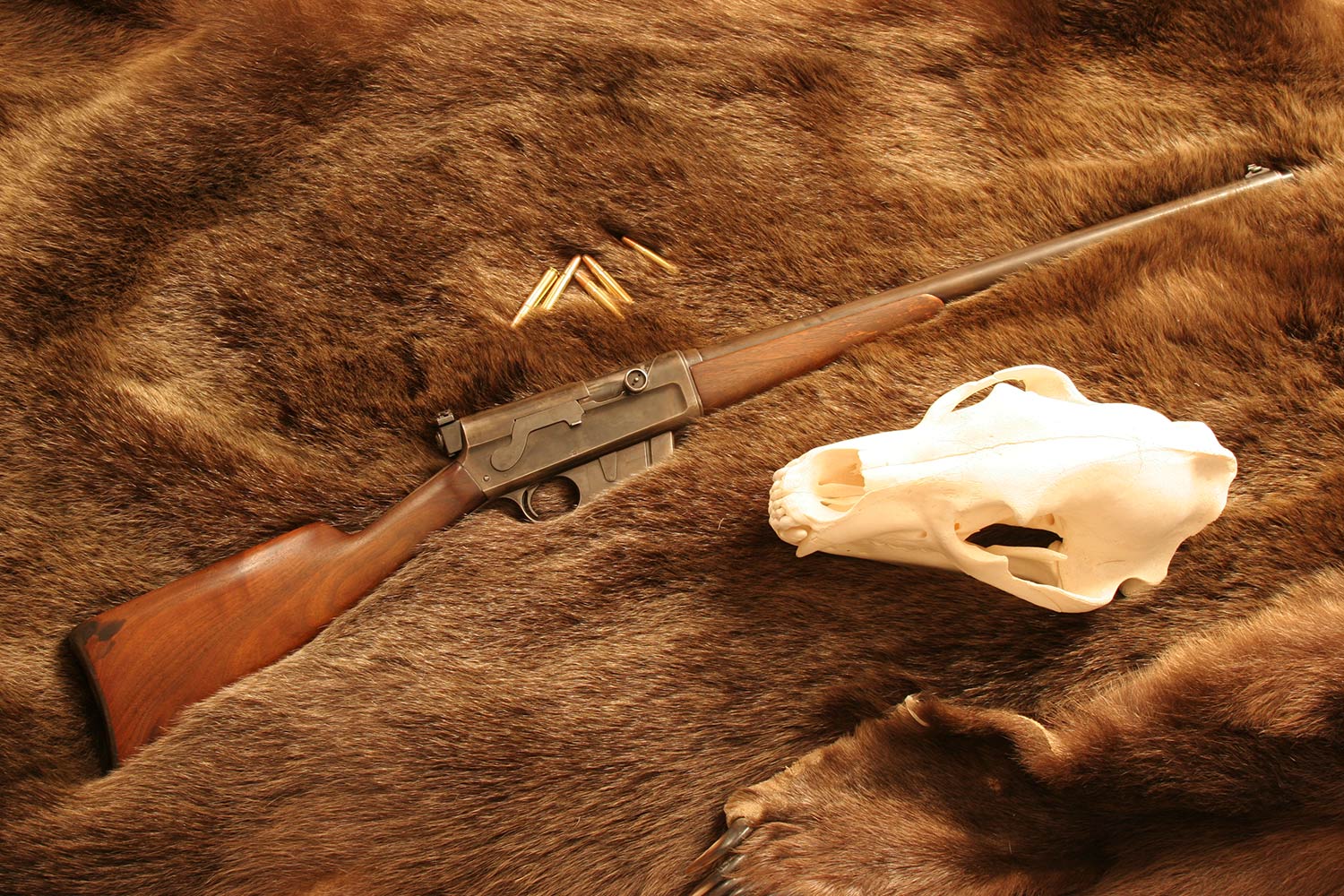
With so many firsts to his name, it should come as no surprise that John Browning designed the first truly reliable and successful semiautomatic rifle for civilian use. Remington introduced the gun initially as the Remington Autoloading Rifle in 1905, but sales were relatively modest until Remington renamed the gun the Remington Model 8 in 1911. Remington also created four new rimless cartridges for the gun: the .25 Rem., .30 Rem., .32 Rem. and .35 Rem. Over the next 25 years, until the Model 8 was replaced by the Model 81 Woodsmaster, sales topped more than 80,000 rifles.
The Model 8 had a long recoil operation, like Browning’s Automatic-5 shotgun, and used a rotating bolt. It differed from the shotgun considerably, as the barrel was encased in a metal jacket containing the buffer and recoil springs. Capacity of the fixed magazine was five rounds, and the gun was equipped with a hold-open device to lock the bolt open when the magazine ran dry. The rifle was marketed primarily to hunters with advertisements from the time show big, menacing bears and tout the rifle as “lightning fast, powerful, and sure.” It was, according to one ad, the only high-power, autoloading rifle made in the U.S. that “positively locks the cartridge in the chamber until the bullet has left the muzzle and thus prevents loss of killing power.”
One person who was no stranger to the Model 8’s killing power was famed Texas Ranger Frank Hamer, who used a Model 8 with a special 15-round detachable magazine to end the criminal careers of Clyde Barrow and Bonnie Parker. It was reportedly just one of three Model 8 rifles used in the ambush.
Winchester 1895 Rifle

The last of the lever-action rifles designed by John Browning, the Winchester 1895, was also, by the standards of the time, the strongest lever-action rifle produced by Winchester. The gun notably addressed the inability to safely stack pointy tip bullets in a tubular magazine—something that could definitely ruin your day—by incorporating a non-detachable box magazine that fed rounds into the action. That was a first for Winchester, and it enabled the company to chamber the rifle for more potent smokeless cartridges, such as the .30-03 (7.62x65mm), .35 Win. and .405 Win., among others.
The rifle is most famously associated with Theodore Roosevelt, with several of the rifles making the trip up San Juan Hill with Roosevelt’s Rough Riders during the Spanish American War. More importantly, from a Winchester sales perspective, Roosevelt and his son Kermit used 1895 rifles, chambered in .30-03 and .405 Win., on safari in Africa. Roosevelt’s writings left little doubt that the gun was one of his favorites. He called it his “big medicine” for lions. Other famous hunters also used the rifle in Africa, including the legendary Oklahoman, Charles Cottar.
Winchester occasionally produces limited runs of the guns, such as the 2019 SHOT Show special rifle chambered for .30-06 Springfield and .405 Win. The gun has a 24-inch button-rifled barrel, straight grip, grade 1 walnut stock with checkering, and a gloss blued finish.
Winchester 1897 Shotgun
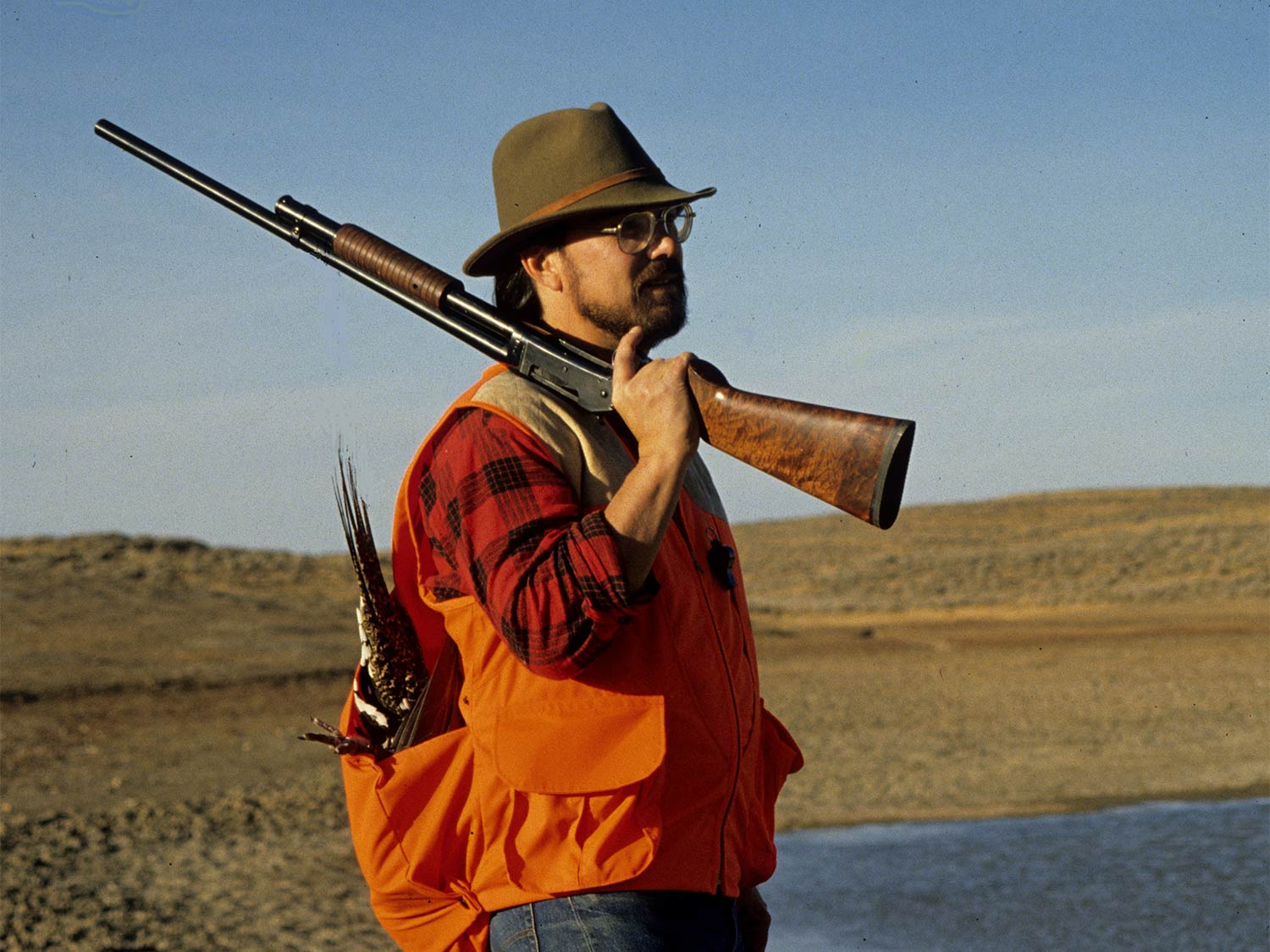
If you still don’t find John Browning’s accomplishments sufficiently impressive, consider this: he also designed the first truly successful pump-action shotgun. The Winchester 1897, an external hammer design, was so innovative that virtually every pump-action shotgun produced since then incorporates some elements of the 1897 design.
The gun was based on an earlier Browning design but was vastly improved. It had a stronger, longer action to handle 12 gauge 2 ¾-inch shells. Ejection was shifted to a port on the side of the receiver, which had a bridge across the top. The slide lock was changed so that slight forward movement of the slide handle was needed to release the lock and open the action. This tended to happen automatically upon firing, but the action was locked until the gun fired, making it infinitely safer to shoot. Other improvements included a longer stock with less drop and the addition of a movable cartridge guide to keep shells from accidentally falling out of the ejection port.
Read Next: 5 Great Bolt-Action Deer Guns
Numerous sporting versions of the gun were made during its 60 years of production as well as trench and riot versions. With no trigger disconnector, you could slam-fire the 97 by holding the trigger down and working the slide. The gun made such a lasting impression on German troops during World War I that the German government officially protested its use, but to no avail. The Americans weren’t about to give up their beloved 97s.
If you want an idea of what one Model 97 meant to just one sportsman, find a copy of the book, The Greatest Hunting Stories Ever Told, and read the reprinted story by my friend and outdoor scribe John Barsness entitled, “The Ninety-Seven.” It is considered a classic of hunting literature—and a fitting tribute to a classic shotgun.
Remington Model 17 Shotgun
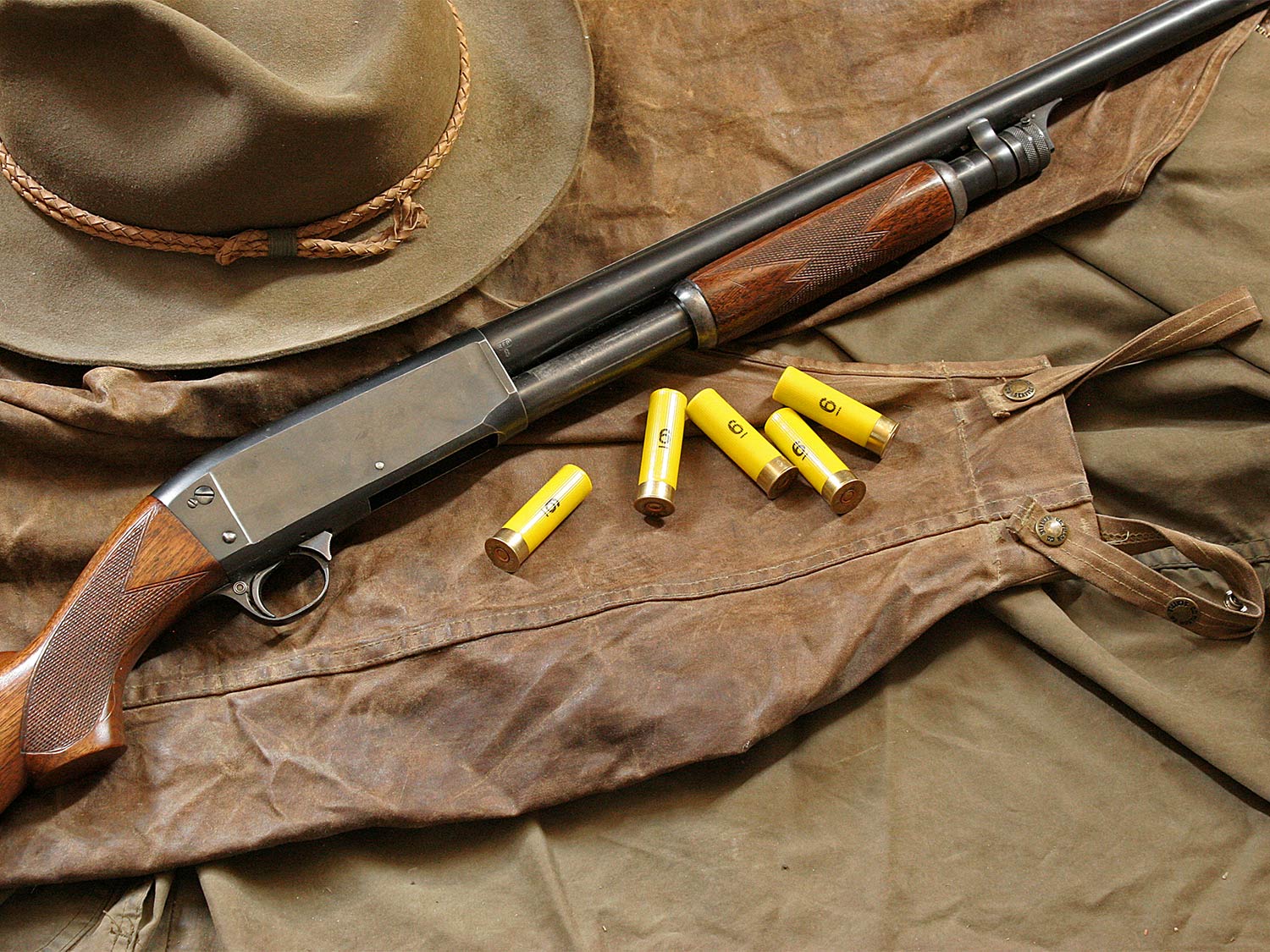
The Remington 17 pump-action shotgun is one of John Browning’s least-known guns, but it was one of his most influential designs. Chambered in 20 gauge only, it incorporated many features that today are standard in pump-action smoothbores. It was hammerless, had a tubular magazine and loaded from underneath.
Remington intended to bring the gun out in 1917—hence the name—but plans were derailed by World War I. Additional changes were made to the gun before it went into production in 1921. Between then and the time production ceased, in 1941, Remington sold more than 72,000 of the shotguns in a variety of sporting and police models, but the gun’s influence was far greater than those numbers would indicate.
Ithaca, for one, mightily wanted to produce their own version of the gun, but had to wait for the patents to expire. When they did, the much-revered Ithaca 37 was created and sold by the millions. As for Remington, the Model 17 led to the Model 31, which led to the Model 870. Other guns, such as the Browning BPS and Mossberg 500, owe much to the basic Model 17 design, which John Browning patented in 1915.
Browning Superposed Shotgun
John Browning’s last long gun was also his most elegantly executed work. He began work on the Superposed over-under shotgun in 1922, at the age of 67, but he would never live to see it produced. He applied for a patent in 1926 and died later that year. The first models, with double triggers, went on sale in 1931.
Over-under guns were more popular in Europe at the time and were pricey. The side-by-side held the high ground in America, but the Superposed changed that. John Browning was determined to bring the gun to market at an affordable price, and when it was introduced in 1931 in four grades (Grade 1, Pigeon, Diana, and Midas), the base model cost just a bit over $100. That was still a princely sum at the time, but it put a high-quality over-under within reach of many who previously could only dream of owning one.
John Browning also wanted the gun to have a single selective trigger, but he was unable to perfect the trigger before his death. That’s when his genetic legacy took over, and his son, Val, worked on various trigger designs until he created a single selective trigger that relied on recoil from firing the first barrel to engage the second. It was eventually replaced with a mechanical trigger design.
Over the years, the gun was made—exclusively in Belgium—in variations too numerous to recount here, including a popular Lightning model weighing just 6.75 pounds. Inflation and high labor costs eventually doomed the Superposed as a standard offering. By the 1970s, it became a limited-production model and was subsequently replaced by the popular made-in-Japan Citori model. In an ironic twist, John Browning’s affordable Superposed shotgun is now only available through Browning International’s Custom Shop, and you’ll pay for the privilege of owning one.
I somehow doubt old JM would object. He was an astute businessman, and I can’t help wondering what he would think if he could see the lasting impact of his gun designs after the passage of a century.
